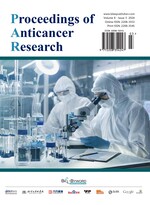A Case Report of Recurrent Guillain-Barré Syndrome with Orthostatic Hypotension Syncope as the First Symptom
Abstract
Guillain⁃Barré syndrome (GBS) is an immune-mediated peripheral neuropathy with acute or subacute onset of flaccid paralysis of the limbs with symmetrical hypesthesia and autonomic nerve involvement [1]. The clinical manifestations of autonomic nerve damage are complex and varied, which may involve extensive or limited autonomic function damage, including abnormalities of the skin, pupil, urinary tract, gastrointestinal tract, cardiovascular system, body temperature, lacrimal and salivary glands, and sexual function, etc. [2], and some patients may even have autonomic nerve damage as the only symptom, which is a variant of GBS and is prone to misdiagnosis or underdiagnosis. Recurrence of GBS is rare, and the manifestations of recurrence are often similar to those of the first symptoms [3], but the patient admitted to our hospital had syncope as the main clinical manifestation of recurrence, which was completely different from that of the first incidence, and syncope is not a common and typical clinical manifestation of GBS, so misdiagnosis is highly likely.
References
Shahrizaila N, Lehmann HC, Kuwabara S, 2021, Guillain-Barré Syndrome. Lancet, 397(10280): 1214–1228.
Hart RG, Kanter MC, 1990, Acute Autonomic Neuropathy. Arch Intern Med, (150): 2374–2376.
Kuitwaard K, Van Koningsveld R, Ruts L, et al., 2009, Recurrent Guillain-Barre Syndrome. J Neurol Neurosurg Psychiatry, 80(1): 56–59.
Pfeiffer G, 1999, Dysautonomia in Guillain Barr Syndrome. Nervenarzt, 70(2): 136–148.
Liehtenfeld P, 1971, Autonomic Dysfunction in the Guillian-Barre Syndrome. Am J med, 50(4): 772.
Anandan C, Khuder SA, Koffman BM, 2017, Prevalence of Autonomic Dysfunction in Hospitalised Patients with Guillain-Barré Syndrome. Muscle Nerve, 56(2): 331–333.
Gupta S, Verma R, Sethi R, et al., 2020, Cardiovascular Complications and Its Relationship with Functional Outcomes in Guillain-Barré Syndrome. QJM, 113(2): 93–99.
James N, Reddy S, Maheshwari U, et al., 2024, Incidence of Cardiovascular Instability in Patients with Guillain-Barré Syndrome: A Retrospective Study. Cureus, 16(1): e52778.
van den Berg B, Bunschoten C, van Doorn PA, et al., 2013, Mortality in Guillain-Barre Syndrome. Neurology, 80(18): 1650–1654.
Zhang Q, Gu Z, Jiang J, et al., 2010, Orthostatic Hypotension as a Presenting Symptom of the Guillain-Barré Syndrome. Clin Auton Res, (20): 209–210.
Tan CY, Shahrizaila N, Tan HT, et al., 2022, Cardiovascular Autonomic Assessment in Guillain-Barré Syndrome: A Longitudinal Study. Neurol India, 70(5): 1856–1859.
Sakakibara R, Uchiyama T, Tamura N, et al., 2006, Urinary Retention and Sympathetic Sphincter Obstruction in Axonal Guillain-Barré Syndrome. Muscle Nerve, 35(1): 111–115.
Das A, Kalita J, Misra UK, 2004, Recurrent Guillain Barre Syndrome. Electromyogr Clin Neurophysiol, 44(2): 95–102.
Mossberg N, Nordin M, Movitz C, et al., 2012, The Recurrent Guillain-Barre Syndrome: A Long-Term Population-Based Study. Acta Neurol Scand, 126(3): 154–161.
Grand Maison F, Feasby TE, Hahn AF, et al., 1992, Recurrent Guillain-Barré Syndrome: Clinical and Laboratory Features. Brain, (115): 1093–1106.
Basta I, Bozovic I, Berisavac I, et al., 2019, Recurrent Guillain-Barré Syndrome - Case Series. Neurol India, 67(6): 1536–1538.
Ishii J, Yuki N, Kawamoto M, et al., 2016, Recurrent Guillain-Barré Syndrome, Miller Fisher Syndrome and Bickerstaff Brainstem Encephalitis. J Neurol Sci, 364: 59–64.
Notturno F, Kokubun N, Sekiguki Y, et al., 2016, Demyelinating Guillain-Barré Syndrome Recurs More Frequently than Axonal Subtypes. J Neurol Sci, (365): 132–136.
Luan H, Zhang P, Zhen M, et al., 2022, Recurrent Guillain-Barré Syndrome Presenting as Pharyngeal-Cervical-Brachial Variant with Three Species of Ganglioside Antibodies: Case Report. BMC Neurol, 22(1): 441.
Wang S, Luo Z, Peng T, 2022, Serum Thyroid-Stimulating Hormone is an Independent Risk Factor of Recurrent Guillain-Barré Syndrome. Muscle Nerve, 65(6): 688–692.
Wakerley BR, Yuki N, 2015, Guillain-Barre Syndrome. Expert Rev Neurother, 15(8): 847–849.
Corston RN, McGale EH, Stonier C, et al., 1981, Abnormalities of Cerebrospinal Fluid Amino Acids in Patients with the Guillain-Barre Syndrome. J Neurol Neurosurg Psychiatry, 44(1): 86–89.
Irani DN, 2009, Cerebrospinal Fluid in Clinical Practice, Saunders, Philadelphia, 121–125.
Mateen FJ, Cornblath DR, Jafari H, et al., 2011, Guillain-Barre Syndrome in India: Population-Based Validation of the Brighton Criteria. Vaccine, (29): 9697–9701.

